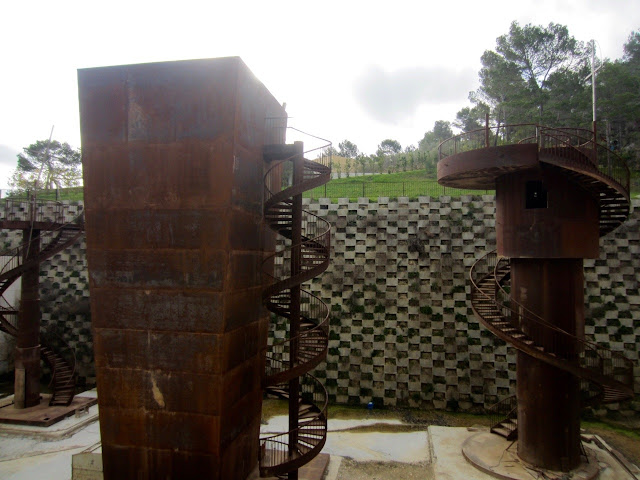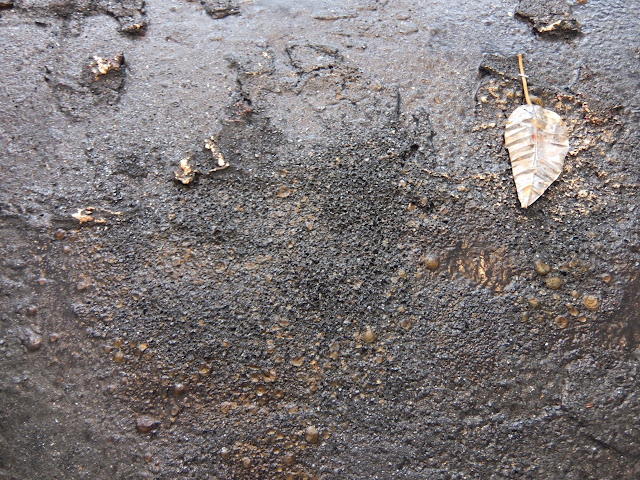Anselm Kiefer - Space of Euphoria
From the end of 2012 to the beginning of 2013, two galleries in Paris hosted Anselm Kiefer exhibitions simultaneously. One was “ANSELM KIEFER Morgenthau Plan” at the Gagosian, and the other was “Anselm Kiefer Die Ungeborenen [The Unborn]” at Galerie Thaddaeus Ropac. Both exhibitions featured works in which wheat was an important motif.
The exhibition "Morgenthau Plan" consisted of an installation and several paintings. The installation titled Morgenthau Plan is placed in the center of the gallery and consists of a messy but very rich arrangement of many wheat plants on the sand that was spread on the floor surrounded by a fence. They look like wheat growing thickly in the desert. The tops of the wheat ears are painted gold and shiny. The fence is open in four directions, with some of the barley jumping out. Bronze-colored snakes and books are scattered on the sand, hidden under the feet of the wheat. The words "Morgenthau Plan" are handwritten on the wall.
The Morgenthau Plan is the name of the occupation plan to weaken Germany that was drawn up in the United States during World War II. Even before the end of the war, plans for post-war Germany were being formulated. The Morgenthau Plan called for the division of Germany into several states, as well as the destruction of key industrial areas fundamental to military strength, especially the Ruhr area, the heart of German industrial power, in order to transform Germany into a primarily agricultural country. It was thought that by eliminating its armaments industry, Germany would not be forced back to the path of militarization. However, opinions within the United States were divided. As a result, the Marshall Plan was ultimately adopted instead of the Morgenthau Plan. The bottleneck of the Morgenthau Plan was the large amount of reparations that Germany would owe the victorious powers. The destruction of German industry would cut off the source of funds for reparations. Fearing that the victorious powers would not be able to collect the reparations, the Morgenthau Plan was abandoned and became a phantom plan.
Kiefer actualized this unrealized plan, a plan that seemed unrealistic to many, in the realm of the arts of installation and painting. In Kiefer's Morgenthau Plan, division is perhaps indicated by the enclosure of a fence, and sand is used to represent the marks of destruction. Sand is generally associated with the barrenness of the desert. In this work, however, the sand is covered with wheat, and the ears are golden. The golden wheat is growing on the barren sand. The wheat in this work seems to represent not only agriculture but also the German land itself.
In addition, five oil paintings are exhibited along with the Morgenthau Plan installation. They appear to be painted versions of the Morgenthau Plan installation. Each is a scene of a field filled with colorful flowers. These fields are not the dark earth that Kiefer once painted, but rather bright earth filled with blooming flowers.
The Morgenthau Plan, which was never realized, is “actualized” in a certain warehouse gallery on the outskirts of Paris in the 21st century. The entire exhibition of the "Morgenthau Plan", consisting of images of the earth with colorful flowers blooming wildly and golden wheat, seems to be a euphoric space rather than a representation of the devastated Germany after the defeat of the war. It is an image of a past that could have been, a scene in potentiality. The fact that it could have been different, and that it still exists as a potentiality, seems to give the work Morgenthau Plan a euphoric atmosphere.
Wheat is also a prominent motif in "Die Ungeborenen," an exhibition that ran concurrently with the "Morgenthau Plan." The exhibition "Die Ungeborenen" features a series of paintings depicting scenes reminiscent of wheat fields. These paintings bear a striking resemblance to those featured in the "Morgenthau Plan.” One notable difference between the two series, however, is the use of color. While the paintings in the former are predominantly white, those in the latter are predominantly black. The black-based hue of the field is further accentuated by elements of gold, whether in the form of gold-painted wheat or gold-painted objects affixed to the field.
Furthermore, several of the works on view here are titled Mutterkorn, oil paintings of a wheat field and a watercolor that combines a painting of a naked woman's torso with an image of wheat. Since the combination of the woman's torso and the image of the wheat in the watercolor is exactly "mother" and "grain," it would seem that Mutterkorn means "mother" and "grain," and at first glance it could be read as a metaphor for birth and fertility. In fact, however, Mutterkorn is a word that translates as ergot. Mutterkorn is a highly toxic fungus that parasitizes grain. Historically, the fungus has caused illness and death in many people. In this way, the paintings titled Mutterkorn are not a metaphor for birth or fertility, but rather suggest death. One could say that death is hidden behind fertility. In this light, the wheat field paintings exhibited here have a double meaning. It gives the impression that the shadow of death lurks in the midst of fertility, just as the poisonous wheat horns exist mixed in with the ordinary wheat. Kiefer's wheat would not only be a metaphor for life, it would also contain death.
In Kiefer's work, wheat is a motif that indicates change. This change is a change of substance and situation, as well as a change of meaning. The substance incorporated into the work is associated with "generation." In some of the oil paintings exhibited in "Morgenthau Plan" and "Die Ungeborenen," Kiefer seems to be painting with oil paint on a canvas covered with photographs. In some places, stretched photographs peek through the thick layers of paint. Most of them are painted over, so it is difficult to tell exactly what they are, but they are probably of wheat fields. Over these photographs, Kiefer paints wheat fields in oil paint. If Kiefer does not paint on a pure white canvas, but goes to the trouble of laying down the photographic image and starting the painting from there, what does that mean? A photograph is an image cut out and fixed at a certain moment in the past, and it is also said to be "evidence in the historical process" and to represent an absence. Using the photograph as a base, Kiefer paints something on it. He redraws and overwrites the image. It is an act of resistance to the fixation of the image, an act of giving new meaning to an image that has been stripped of its meaning as evidence, and perhaps an act of trying to fill an absence. These paintings are made with the photographic image as a base. Of course, the underlying photograph does not disappear, but remains there for a long time, almost invisible. Perhaps it is possible that the paint will eventually peel off, revealing the photograph. Kiefer may even have left this possibility open. By painting on a photograph, he creates a work of art in which the painting is generated in the here and now, and in which new meanings are created.
This is also true of the Morgenthau Plan installation. With the wheat on the sand, Kiefer recreates in his work a past that was never realized, a past that could have been. What is actually produced is not the important. What matters is the attempt to make a work, to generate something, itself.
In this way, wheat is a very appropriate motif to represent generation. The wheat field is in a cycle from sowing to harvest, a cycle that is constantly changing and can continue without end. Kiefer's wheat field could be compared to the representation of Nazi Germany through architecture. While architecture is a closed space, a wheat field is an open space. While architecture is a one-way process of change toward decay, a wheat field is a process of repeated generation and regeneration. Through such a wheat field, Kiefer could symbolize post-war Germany. Postwar Germany, as represented by the wheat, is a country in the process of creation. The reason why Kiefer's wheat paintings always contain both barrenness and richness may be because they are unstable in such a generative process. Kiefer's post-war Germany is represented as something in the process of generation, something that will never be completed.
This is a part of The Art of Potentialities: Representation with End, Community without End II. Full text is available on Kindle (Amazon US, UK, DE, FR, ES, IT, NL, JP, BR, CA, MX, AU, IN) .


Comments
Post a Comment